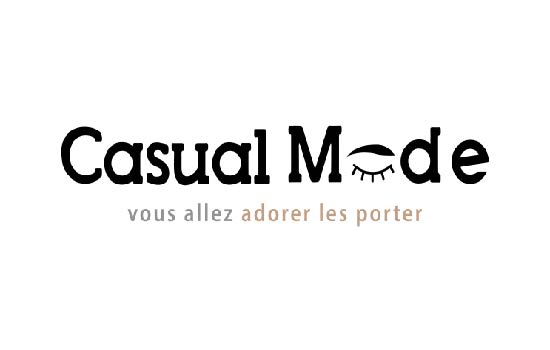Delving into the history of casual wear reveals its roots in rebellion and a desire for comfort. From jeans to t-shirts, these once-revolutionary items have become fashion staples, shaping trends and influencing designers worldwide.
Gone are the days when a suit and tie defined professionalism. Today, companies are embracing a more relaxed approach, recognizing the positive impact of casual dress codes on employee morale and creativity.
Denim, with its rugged charm, and sneakers, with their versatility, have become timeless symbols of casual fashion. These wardrobe essentials seamlessly blend comfort and style, making them go-to choices for people across the globe.

Casual Mode in Technology
In the digital realm, Casual Mode extends beyond clothing. User-friendly interfaces and comfortable online experiences are now prioritized, reflecting a shift towards making technology more accessible and enjoyable for everyone.
From dining to socializing, the casual lifestyle has permeated various aspects of our lives. Casual dining experiences and informal gatherings have become synonymous with comfort and camaraderie.
Casual Mode isn’t a new phenomenon. Its roots can be traced back through history, with shifts in societal norms influencing its development. Over time, casual mode has seamlessly integrated into different industries, adapting to the changing needs of individuals and organizations.
Advantages of Casual Mode
Embracing casual mode comes with a multitude of benefits. From increased productivity to enhanced creativity and improved work-life balance, the advantages are far-reaching. Companies and individuals alike are recognizing the positive impact of adopting a more casual approach to their endeavors.
Implementing casual mode in the workplace requires a strategic approach. From dress codes to flexible working hours, companies are finding innovative ways to create a more relaxed and comfortable environment.
The gaming industry has fully embraced casual mode, shaping user experiences to be more accessible and enjoyable. Trends show a preference for games that allow players to engage in a more laid-back manner, breaking away from the intensity of traditional gaming.
Fashion and Casual Mode
The influence of casual mode extends beyond professional and leisure settings; it has infiltrated the fashion world. From streetwear to business casual, clothing trends are mirroring the desire for comfort and self-expression.
While casual mode has its advantages, there are situations where informality is inappropriate. Striking the right balance is crucial, especially in professional settings where a more formal approach is expected.
The psychological benefits of casual mode cannot be overstated. It contributes to improved mental well-being and stress reduction, creating a positive impact on individuals’ overall quality of life.
Casual Mode in Social Interactions
Communication has become more casual than ever, especially in the digital realm. Social media platforms thrive on informal interactions, reshaping the way we connect and communicate.
The tech industry, known for its innovation, has been a trailblazer in adopting casual mode. Flexible work environments and remote work culture are becoming standard practices, reflecting a shift towards a more relaxed approach to professional life.
Even in education, there’s a move towards more informal learning approaches. Students are encouraged to engage in a manner that suits their individual learning styles, fostering a more inclusive and dynamic educational environment.
Future Trends in Casual Mode
Looking ahead, the future of casual mode seems promising. Predictions include further integration of technology, making casual interactions even more seamless, and the continued blurring of lines between formal and informal settings.
At its core, casual mode embodies flexibility. It’s the antithesis of rigidity, allowing individuals to navigate diverse settings with ease. However, understanding the balance between informality and professionalism is crucial to harnessing the power of casual mode effectively.
The traditional corporate landscape is undergoing a transformation, and casual mode is at the forefront. Embracing casual attire, flexible work hours, and a more relaxed office culture are strategies companies are adopting to enhance employee satisfaction and productivity.
Casual Mode in Social Interactions
Communication styles have evolved in the age of casual mode. From text messages to social media interactions, the language has become more informal, breaking down barriers and making conversations more approachable.
Casual mode extends beyond behavior to fashion, influencing how we dress. The evolution of casual fashion spans from streetwear to business casual, with cultural nuances dictating what is considered appropriate in different settings.
Gaming experiences have witnessed a shift towards casualization. The rise of casual gaming, characterized by accessible gameplay and shorter sessions, reflects a broader cultural preference for a more laid-back approach to leisure.
Benefits of Embracing Casual Mode
The advantages of adopting a casual mindset are multifaceted. From improved mental well-being to heightened creativity and productivity, casual mode offers tangible benefits that extend beyond personal preferences.
While casual mode is celebrated for its positive impact, it’s essential to recognize when it’s appropriate. Striking a balance between informality and maintaining a level of professionalism is key, especially in environments where a more serious tone is expected.
Beyond the surface-level advantages, casual mode has a profound psychological impact. It contributes to stress reduction, fostering a positive mindset that transcends various aspects of an individual’s life.
Casual Mode in Educational Settings
Education is not immune to the casualization trend. Informal approaches to learning, flexible classroom environments, and a focus on student engagement are shaping the future of education.
Despite its widespread acceptance, casual mode is not without its challenges. Striking the right balance between casual and professional expectations and avoiding over-informality in certain situations require a nuanced approach.
The acceptance of casual mode varies globally, influenced by cultural norms and traditions. What may be considered perfectly casual in one part of the world might be perceived as too informal in another.
Tech Industry and Casual Mode
The tech industry has been a trailblazer in embracing casual mode. Remote work culture, flexible schedules, and technology-driven communication have become standard practices, redefining the traditional notions of professionalism.
Looking ahead, the future of casual mode appears promising. Predictions include further innovations in technology, blurring the lines between formal and informal settings, and a continued rise in the acceptance of casualization more

Leave a Reply